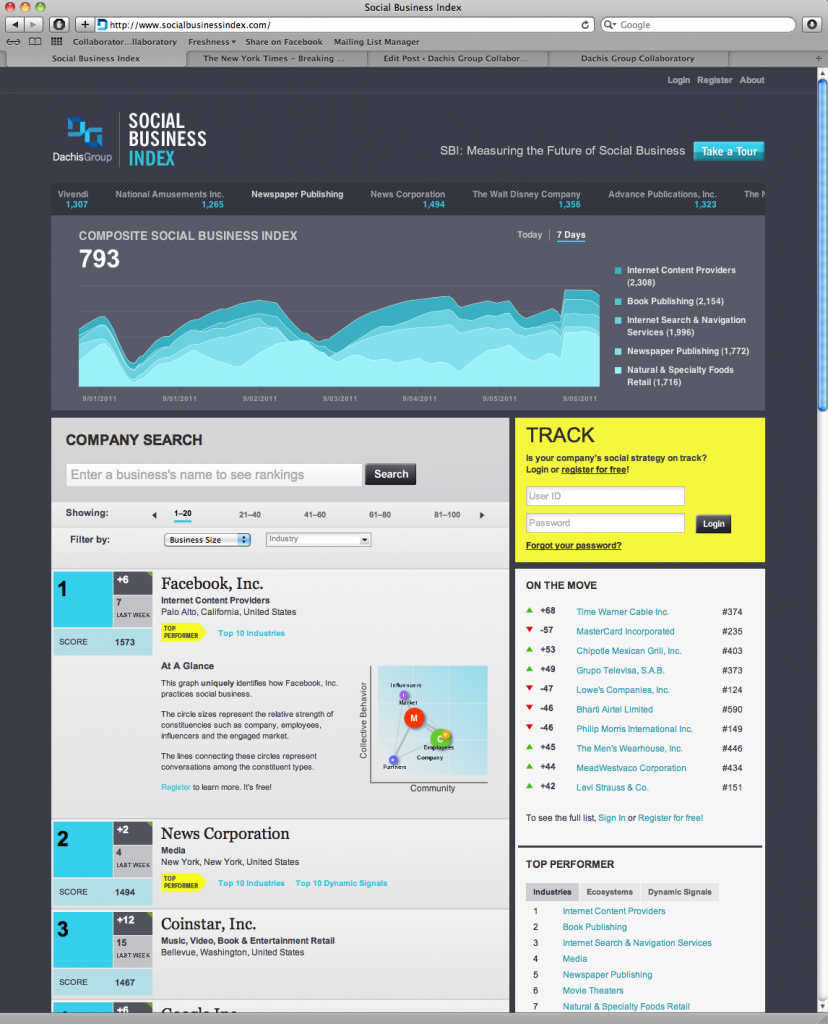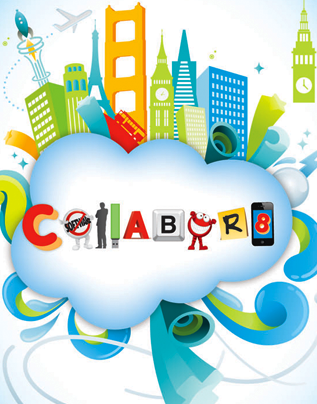
Historically, the trouble I’ve always had with social media was the precision deficit surrounding the interpretation of its influence. It always seemed to me that if you could get, say, Chris Brogan to talk about anything, you were successful with social media. Okay, maybe that’s an exaggeration, and social media has really never been my area of expertise in the spectrum of all social business. Readers of this blog know I focus more on the internal enterprise side of social business. Because, well, it is more rational maybe? See my coverage of my first SXSW Interactive.
BUT…
Before I got back into the technology sector in the 90s, I spent a solid few years in the Advertising business. And not digital or online advertising (it didn’t exist yet). In the real Advertising (TV/Broadcast/Print) world. (With a capital A.) Think of it as Mad Men for Yuppies (late 80s). I entered the ad world as an Account Executive on the IBM account. The agency I joined, LGFE, was a boutique outfit, a part of JWT. We had 100% of the IBM business. In 1980 dollars, we had a $160M annual media budget for IBM and it comprised the lion’s share of the agency’s billings. The agency was best known for two things: 1. its launch of the IBM PC and 2. its famous Executive “breakaway” which literally made Advertising history. But those are great stories for another day. Like most LGFE employees after the breakaway, I skedaddled my way down Madison Avenue to a new position with Ogilvy & Mather where I helped teach our Creatives about the Unix operating system. Again, great stories for another day, another blog. I just wanted to establish a little Mad Street Cred before I get to the heart of this post.
When I think about the burgeoning world of social media, I compare its trends and “findings” with what we were doing 30 years ago in Advertising. Even back then, for all the hoopla, big expense accounts, private limos, and 5-star hotels, Advertising was pretty serious stuff. It was all about the numbers. (We all thanked the technology gods for Lotus 1-2-3.) Campaigns that strove to cultivate an emotional connection to a brand were paid for by executives who wanted to see stone cold returns on their investment. And, I’m going way out on a limb here, after 30 years I’m pretty sure that hasn’t changed. In fact, the pressure to deliver results from media spend is probably more fierce than ever considering the fracturing of a traditional media landscape that was fairly easy to manipulate in the old days before the Internet and mobile technology.
So fast forward to 2011. No, 2010. Erik Huddleston joined Dachis Group as CTO. When Erik first arrived, I wasn’t sure what he was going to do. Get our wifi working in the office or something. But, the next thing I knew, Erik was presenting at Defrag, whaaa? and young men in black tee shirts that said, “Hadoop” started skulking around the office. I finally got briefed on what this little dream team was working on buried away in remote locations around the world, and I was kinda blown away.
A beginning step in that effort is announced today for public consumption. Erik’s team has built a platform that crunches hundreds of millions of data points in near real time to deliver a view on how social a given company is – how they compare to their industry, their competitors – broken down as best in class by company, subsidiary, geography, department and brand. Culling from APIs, data buys, data partnerships, page scrapes, crowd-sourced data, company contributions, and our own internal data team, we now offer the Social Business Index (SBI) to anyone who wants to get a view into how your company’s brand is performing on the social web. Over 100 leading companies participated in the early access program to get the data refined and help develop useful insights for its use. The SBI offers insights for 26,000 brands from over 20,000 companies by analyzing over 100 million social accounts world wide, and hundreds of millions of other sources.
Again, the SBI is simply a lightweight lens on a massive platform that is compiling ground-breaking social data analytics and analysis. The SBI is free for the companies covered and anyone can sign up to see how your brand is doing at www.socialbusinessindex.com.

This first effort is just a taste of what is coming. Big data will yield something that has been inconveniently missing in marketing on a large scale: evidence-based marketing with business outcomes correlated to measurable metrics. Internet marketers have done a great job with what’s known as performance marketing, but with the advent of big data, marketing spend can be targeted with much greater precision and brands can engage meaningfully in near real time. In fact, interactive advertising has finally matched broadcast TV spend. Forrester recently reported that, “By 2016, advertisers will spend $77 billion on interactive marketing – as much as they do on television today.”
This post is a departure from what I typically cover regarding the Enterprise 2.0 sector, but I’m extremely excited about this work. On the road map is deep analysis into workforce/partner/supplier engagement, so the relevance for the enterprise is huge. Even having this type of brand intelligence will impact internal operations in many ways. Agile companies who can react quickly, will be competitive winners in their categories.
If Dachis Group is known only for its BSD (Big Social Data), then I am totally cool with that. Being first to market with real ROI on social is sweet, and will go far to relegate the buzzfest of social media 1.0 to the history books.






